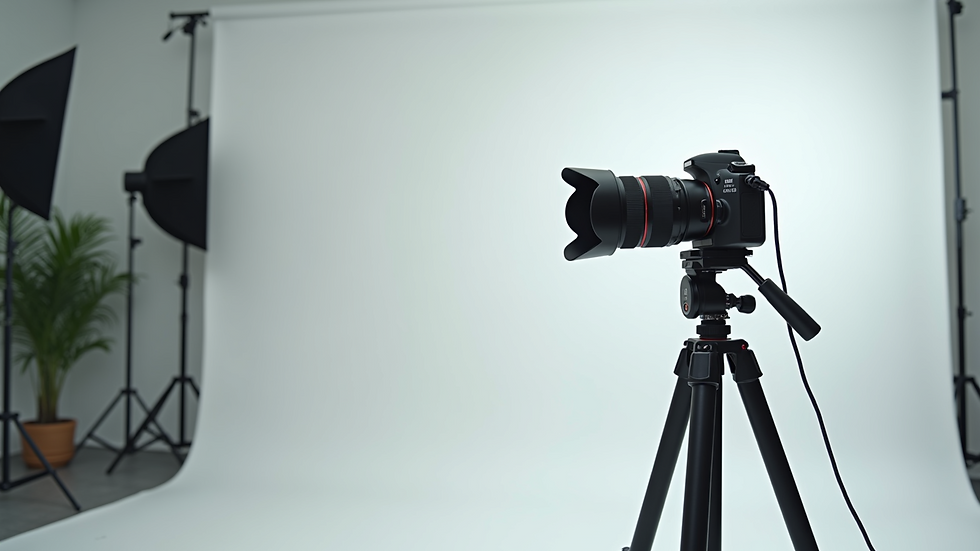Mastering the Fundamentals of Video Production
- Justin Fields
- Oct 6
- 4 min read
If you've ever wondered how those captivating videos come to life, you're in the right place. Video creation might seem like a complex puzzle, but once you break it down, it’s more like assembling a fun Lego set. Each piece fits perfectly to build something amazing. Whether you're aiming to promote your brand, share a story, or capture an event, understanding the basics of the video creation process can make all the difference.
Let’s dive into the essentials and explore how you can master this craft step-by-step.
Understanding the Video Creation Process: From Idea to Screen
The video creation process is like cooking a delicious meal. You start with a recipe (your idea), gather ingredients (equipment and team), and follow steps to create a final dish (your video). Here’s a simple breakdown:
Pre-Production: This is the planning stage. You brainstorm ideas, write scripts, scout locations, and schedule shoots. Think of it as laying the foundation for your video.
Production: This is the actual filming. Cameras roll, lights shine, and your vision starts to take shape.
Post-Production: Editing, adding music, color correction, and final touches happen here. This stage polishes your video until it shines.
Each phase is crucial. Skipping one can lead to a shaky final product. For example, without solid pre-production, you might find yourself scrambling on shoot day, wasting time and money.

What do you mean by video production?
You might ask, “What exactly is video production?” Simply put, it’s the entire process of creating video content. From the initial concept to the final cut, video production covers everything involved in making a video.
It’s not just about pointing a camera and hitting record. It’s about storytelling, technical skills, and creativity coming together. Professionals in this field use their expertise to craft videos that engage, inform, and inspire viewers.
For instance, a commercial video production involves scripting, shooting, and editing to promote a product or service effectively. Meanwhile, event coverage captures real-time moments, requiring quick thinking and adaptability.
If you want to learn more about how a creative team handles this, check out Light Rain Production for a peek behind the scenes.
Essential Gear You Need to Get Started
You don’t need a Hollywood budget to start creating great videos. Here’s a list of essential gear that balances quality and affordability:
Camera: A DSLR or mirrorless camera is perfect for beginners. Even smartphones today have impressive video capabilities.
Tripod: Stability is key. A tripod keeps your shots steady and professional-looking.
Microphone: Clear audio is just as important as clear visuals. Lavalier mics or shotgun mics work well.
Lighting: Natural light is great, but having a basic lighting kit helps control shadows and highlights.
Editing Software: Programs like Adobe Premiere Pro, Final Cut Pro, or even free options like DaVinci Resolve can help you polish your footage.
Remember, the best gear is the one you know how to use well. Start simple, master your tools, and upgrade as you grow.

Tips for Shooting Like a Pro
Shooting video is more than just pressing record. Here are some practical tips to elevate your footage:
Plan Your Shots: Storyboard or list the shots you need. This saves time and ensures you don’t miss anything important.
Use the Rule of Thirds: Imagine your frame divided into nine equal parts. Place your subject along these lines or intersections for a balanced composition.
Mind Your Lighting: Avoid harsh shadows or overexposure. Soft, even lighting makes your video look polished.
Keep It Steady: Use a tripod or stabilizer to avoid shaky footage.
Capture B-Roll: Extra footage of your environment or details adds depth and interest to your video.
For example, if you’re filming a testimonial, get close-up shots of the speaker’s expressions and wider shots of the setting. This variety keeps viewers engaged.
Editing: Bringing Your Story to Life
Editing is where your video really comes alive. It’s like sculpting - you chip away the unnecessary parts and shape the story.
Here’s how to approach editing:
Organize Your Footage: Label clips and create folders. This saves time when you start cutting.
Cut for Clarity: Remove any awkward pauses or mistakes. Keep the pace lively.
Add Transitions and Effects Sparingly: Too many effects can distract. Use simple cuts or fades.
Incorporate Music and Sound Effects: These enhance mood and engagement. Just make sure you have the rights to use them.
Color Correct: Adjust brightness, contrast, and color balance to make your video visually consistent.
Don’t rush this step. A well-edited video can turn a simple shoot into a compelling story that resonates with your audience.

Final Thoughts on Mastering the Video Creation Process
Mastering the video creation process is a journey, not a sprint. With each project, you’ll learn new tricks and improve your skills. Remember, the goal is to tell your story clearly and creatively.
If you ever feel overwhelmed, break the process down into manageable steps. Plan carefully, shoot thoughtfully, and edit with care. And if you want to see how professionals do it, companies like Light Rain Production offer great examples of blending professionalism with personality.
So, are you ready to pick up that camera and start creating? Your story deserves to be seen and heard. Let’s make it unforgettable!



Comments